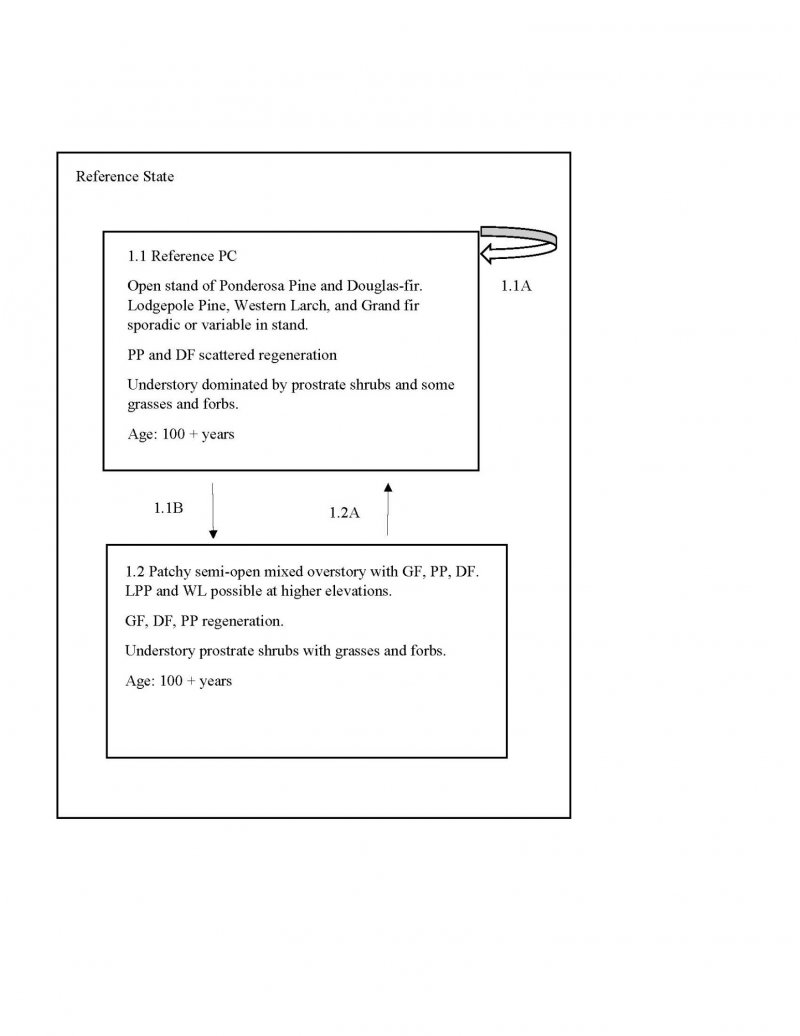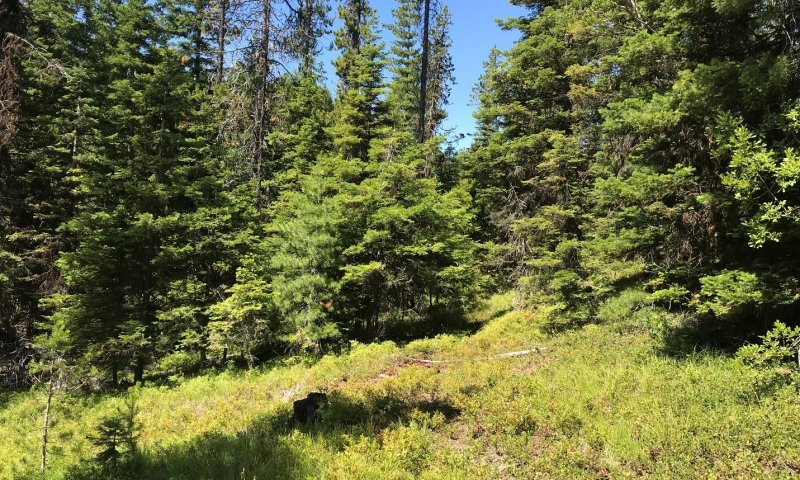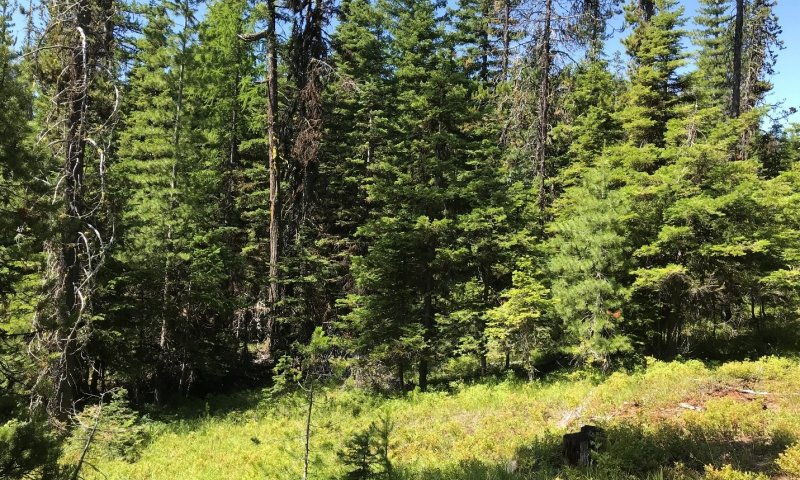

Natural Resources
Conservation Service
Ecological site F006XB003WA
Frigid Xeric Mountain Slopes (Grand fir Warm Moderately Dry Low Shrub/Herb)
Last updated: 4/01/2025
Accessed: 12/06/2025
General information
Provisional. A provisional ecological site description has undergone quality control and quality assurance review. It contains a working state and transition model and enough information to identify the ecological site.
MLRA notes
Major Land Resource Area (MLRA): 006X–Cascade Mountains, Eastern Slope
Major Land Resource Area (MLRA): 006X–Cascade Mountains, Eastern Slope.
Stretching from northern Washington to southern Oregon, MLRA 6 encompasses the mountain slopes, foothills, elevated plateaus and valleys on the eastern slopes of the Cascade mountains. This MLRA is a transitional area between the Cascade Mountains to the west and the lower lying Columbia Basalt Plateau to the east. Situated in the rain shadow of the Cascade Crest, this MLRA receives less precipitation than portions of the cascades further west and greater precipitation than the basalt plateaus to the east. Geologically, the majority of the MLRA is dominated by Miocene volcanic rocks, while the northern portion is dominated by Pre-Cretaceous metamorphic rocks and the southern portion is blanketed with a thick mantle of ash and pumice from Mount Mazama. The soils in the MLRA dominantly have a mesic, frigid, or cryic soil temperature regime, a xeric soil moisture regime, and mixed or glassy mineralogy. They generally are moderately deep to very deep, well drained, and loamy or ashy. Biologically, the MLRA is dominated by coniferous forest, large expanses of which are dominated by ponderosa pine, Douglas-fir or lodgepole pine. Areas experiencing cooler and moister conditions include grand fir, white fir, and western larch while the highest elevations include pacific silver fir, subalpine fir and whitebark pine. Economically, timber harvest and recreation are important land uses in these forests. Historically, many of these forests would have experienced relatively frequent, low and mixed severity fire favoring the development of mature forests dominated by ponderosa pine or Douglas-fir. In the southern pumice plateau forests, less frequent, higher severity fire was common and promoted the growth of large expanses of lodgepole pine forests.
LRU notes
Common Resource Area (CRA) 6.5 - Chiwaukum Hills and Lowlands
This LRU occurs predominantly on mountains and plateaus. The soils are dominantly in the Alfisols and Andisols taxonomic order, with some Inceptisols . Soil parent materials are dominantly colluvium and residuum from igneous, sedimentary, and metamorphic rock, glacial outwash, and glacial till, with a mantle or mixture of volcanic ash in the upper part. Taxonomic soil climate is primarily a frigid temperature regime and xeric moisture regime with average annual precipitation of about 33 inches.
Other LRU'S where the site occurs:
CRA 6.6 - Yakima Plateau and Slopes
CRA 6.7 - Grand Fir Mixed Forest
CRA 6.4 - Chelan Tephra Hills
Classification relationships
CWS337 - Grand fir/Mountain Snowberry (ABGR/SYOR) (WEN)
CWS338 - Grand fir/Pinemat Manzanita (ABGR/ARNE) (WEN) Yakima Nation 16 - Grand fir/Creeping Snowberry (ABGR/SYMO)
Ecological site concept
This site is designated Grand fir Warm Moderately Dry Low Shrub/Herb. It occurs on ridgetops and upper-middle slopes ranging from 2 to 50 percent. Elevation range 1500 to 4500 feet. Average precipitation ranges from 25 to 40 inches. Main tree species are Douglas-fir and ponderosa pine. Lodgepole pine and western larch can be present in cooler moist areas. In natural processes frequent fire created open stands of ponderosa pine and Douglas-fir. Understory consisted of low shrubs like pinemat manzanita, bearberry, creeping snowberry, mountain snowberry, and dwarf huckleberry. Main herbs consist of pinegrass, elk sedge, western fescue, lupines, and yarrow. Oregon white oak will be present on the ABRGR/SYMO sites in the southern area of MLRA 6.
The following USFS plant associations are included in this ecological site:
Grand fir/Mountain Snowberry (ABGR/SYOR)
Grand fir/Pinemat Manzanita (ABGR/ARNE
Grand fir/Creeping Snowberry (ABGR/SYMO) – Included from Yakima Indian Reservation
The most prominent plant associations respectively are: ABGR/SYMO, ABGR/ARNE, and ABGR/SYOR. All three of these plant associations occur on rocky gravelly soils and the overstory trees can appear ragged or wolfy.
Associated sites
| F006XD002WA |
Cool Frigid Xeric Ashy Slopes (Grand fir Cool Dry Grass) On cooler and slightly moister sites Associated Chelan through Yakima along with NW corner of Klickitat. |
|---|---|
| F006XC003WA |
Cool Frigid Moist Xeric Mountain Slopes (Grand fir Cool Moist Shrub/Herb) On cooler and moister sites. Associated Chelan through Yakima along with NW corner of Klickitat. |
| F006XB001WA |
Frigid Xeric Mountain Slopes (Douglas-fir Moderately Dry Shrub/Herb) Little drier. |
Similar sites
| F006XD005WA |
Frigid Xeric Mountain Slopes and Plateaus (Grand fir Warm Moderately Dry Shrub) Has western hazel in the understory. |
|---|
Table 1. Dominant plant species
| Tree |
(1) Pseudotsuga menziesii |
|---|---|
| Shrub |
(1) Symphoricarpos |
| Herbaceous |
Not specified |
Click on box and path labels to scroll to the respective text.
Ecosystem states
State 1 submodel, plant communities
| 1.1B | - | Lack of frequent ground fires |
|---|---|---|
| 1.2A | - | Mixed severity fire |


